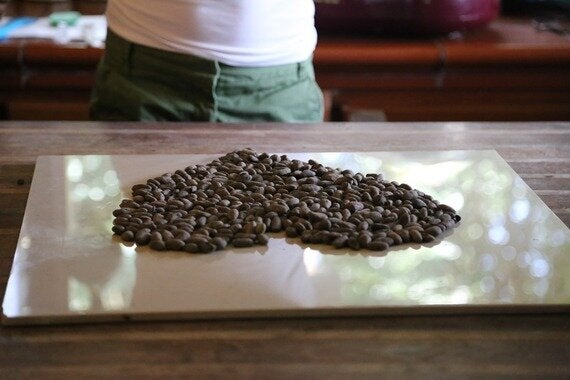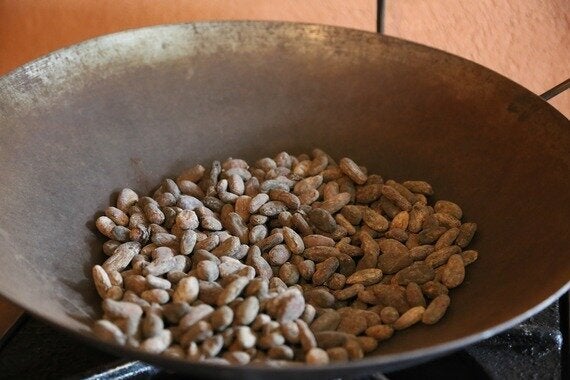
Photo Credit: Pixabay
So what's all the fuss about? What exactly is 'raw' chocolate? Surely all chocolate is raw, right? Wrong. Prepare yourself for a crash course in this natural wonder that some are calling a 'superfood'.
Why not conventional commercial chocolate?
In today's world, the demand for chocolate and chocolate based confectionary is high and therefore, the processes must be short in order for supply to meet demand. To quicken this production process, rather than leaving these beans to naturally dry, cocoa beans are heated to very high temperatures, very quickly and this leads to the removal of all nutritional content, making the end product bitter to taste. To improve the taste, refined sugar is added, often in quantities that actually outweighs the cocoa content. To move the chocolate from it's dark, bitter-sweet taste to a more commercially understood sweet and silky taste, dried milk is added as well as more sugar until we have... milk chocolate varieties. White chocolate is just the cacao butter with sugar & milk, no cocoa powder.
What is it & where does it come from? The chocolate trail....
Chocolate comes from cacao beans. These are the seed of the plant 'Theobroma cacao', which grows in South America and Africa. The beans after being picked can now go through two processes. One produces what we know as 'conventional commercial' chocolate, and the other, a more natural process producing raw chocolate. Conventional commercial Chocolate is roasted most likely in a furness, ground down, pressed, mixed with fat and sugar and turned into what we know and associated as chocolate. Raw chocolate, on the other hand, does not undergo the intense heat of the roasting process. Instead, raw chocolate is left to dry naturally in temperatures that do not exceed 42 degrees - often this happens by leaving them in the heat of the sun which takes time. Even the temperatures of the grinding or handling machines must be kept below 42 degrees in order for the chocolate to be considered 'raw'.
Although dark chocolate does have a good name for itself as the healthier chocolate, it still has undergone the intensive process, impacting its nutritional content and quite likely to contain refined sugar. There are many differences, if you want to read all the differences between dark and raw chocolate, I found this great blog list: http://food.allwomenstalk.com/differences-between-raw-chocolate-and-dark-chocolate-everyone-needs-to-know
Let's move on.

Photo Credit: Pixabay
Why Choose Raw Cacao?
Nutritionally, there's a reason why many are calling this naturally occurring gem a 'superfood'. There are many benefits of eating raw chocolate, here's a few:
- Raw chocolate is an almost complete foodstuff. It is loaded with more than 300 chemically identifiable compounds, and is higher in antioxidants than green tea and wine!
- It also contains essential nutrient such as: protein, fats, calcium, iron, carotene, thiamine, riboflavin, and magnesium, which is essential for the correct functioning of the brain.
- Cacao contains caffeine, which means that a raw chocolate drink or dessert will give you a similar kick to that of coffee, but in a healthier and raw way with added essential vitamins and more importantly minerals.
- It is very high in vitamin C - just one spoonful of raw cocoa powder can provide 415mg of antioxidants, comparing that to a vitamin supplement that offers 25mg (and is processed) makes raw cocoa look highly beneficial.
- It contains many B-Vitamins including: B1, B2, B3, B5, B9 and also Vitamin E.
- All raw/fresh produce contains enzymes that aid digestion. Heating 'zaps' many of these enzymes and this increases the strain on the body's own enzyme production to digest food. Less efficient enzymes can lead to toxicity in the body, excess consumption of food, and obesity and chronic disease.
- Blissful goodness: Anandamide is an endorphin naturally produced by humans after exercise. In the plant world it has only been found in cacao. Anandamide is known as the bliss chemical because it is naturally produced when people feel blissful.
- Feel good food: Tryptophan is an essential amino acid found in cacao in significant quantities. The presence of this amino acid is essential for the production of serotonin. Serotonin is a primary neurotransmitter that plays a powerful role in regulating our mood. Heat destroys tryptophan so many people are deficient. Magnesium also plays a major role in serotonin production so raw cacao contains both these important neurotransmitter nutrients.
- Gut Health- raw foods & chocolate contain friendly bacteria that stimulate the immune system and enhance digestion by populating the digestive tract with beneficial flora.
- It is important to look out for the word 'raw' - this ensures the cocoa/cacao has dried naturally in the sun before crushing - no nutrients are zapped. It is naturally sweet and each region has different 'notes' - some have an earthier taste and others will have a more mellow taste.
Other qualities:
- Raw cocoa/cacao powder is the perfect ingredient to make vegetable juices/ smoothies more palatable and nutritional - who doesn't like a chocolate smoothie?
- Make great raw desserts such as coconut milk mousse
- Enjoy as a lovely warm chocolate drink - perfect on its own or with almond or oat milk.
As with most things raw, whole food or superfood, I am hugely enthusiastic about raw chocolate - as if you couldn't guess! The benefits are above and beyond that of commercial chocolate and any move away from refined sugar is a huge thumbs up from me. Not to mention, there are heaps of ways of cooking and creating the most delicious and nutritious foods that will really change your perspective on traditional confectionary and open your mind to a new way of thinking.
Recipes